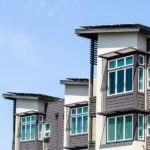Termite Control: Signs and Treatment of Termites
Each year, termites wreak havoc on homes and businesses, doing billions of dollars of property damage. If these destructive creatures get into your house, it’s crucial to eradicate the infestation as soon as possible, before they’re able to cause significant issues. To identify a termite infestation, you need to know a few basic termite facts.
Properties in California are vulnerable to infestation because termites flourish in warm weather. There are three termite species in California, the Western Drywood Termite, the Subterranean Termite, and the Pacific Dampwood Termite, and termites are found throughout the state.
- Western Drywood Termites, as the name implies, eat drier wood. You won’t necessarily find drywood termites on the ground because they don’t require much moisture and won’t need to be near a water source. Colonies of Western Drywood Termites can do an immense amount of damage. They don’t need to tunnel into your house- they can even hitch a ride on used furniture and establish colonies throughout your home.
- Subterranean Termites are more limited in their living arrangements than the drywood species. Because they require up to 70 percent moisture, they must have access to a water source. Their well-organized colonies are found deep underground, and they get into your house by eating the wood structures at the base of your building. You’re likely to spot them near the foundation of your home.
- Pacific Dampwood Termites are pickier eaters than other termites. They prefer to eat wood that’s soft and damp. They don’t get into your home on furniture like drywood termites do, but if they do get into your home, they’re challenging to kill. They’re incredibly tenacious, and they reproduce prolifically.
What draws termites to a home or business? Geography and weather can increase your risk of infestation. Does this mean you have to move to get away from termites? No, because there are other risk factors that you can control. Be vigilant about moisture in your home, staying alert to leaks and drainage issues that will create a welcoming environment for termites. Keep firewood away from your home’s exterior, get rid of any nearby stumps, keep landscaping mulch at least six inches away from your foundation, and make sure wooden siding is six inches from the ground. Pay attention to cracks in your foundation, repairing them quickly so that termites can’t use them to get into your home, and seal spaces around water and gas lines, where they can gain easy entry. Don’t store cardboard boxes or similar cellulose sources in your crawlspace, and if you have a moisture issue in your crawlspace or basement, address it as quickly as possible. It’s also wise to be proactive about termite control, scheduling regular inspections from a termite control expert.
How do you know when termites have invaded your home? Several tell-tale signs give them away.
- You might notice termite droppings. Western Drywood Termites leave behind droppings that look like coffee grounds or a pile of sawdust. This makes sense since all they eat is wood and cellulose. They leave behind these droppings because they like to keep their spaces clean. As they’re devouring your home, the workers will make little holes where they’re working and kick out their excrement. When they do this, it creates mounds of pellets where they’ve infested your home. This will be easy for you to identify because if you see what looks like a little pile of pepper or sawdust somewhere odd, it means termites are living there.
- Your wood flooring may blister or bubble. This is a common indicator of Subterranean Termites. Because this species needs plenty of moisture, they’ll enter your home from below. If you have wooden floors, especially laminate or synthetic flooring, they may create raised portions in your floor. While blistered wood floors don’t always mean you’ve got termites, it’s worth calling in a professional to find out.
- Subterranean Termites build mud tubes on the outside of your house. Termites use these pencil-thin structures to travel from the ground into your home. Termites build their nests underground and then use mud tubes to forage upwards for food. Mud tubes allow them to maintain the humidity and temperature level they need to survive.
- You may see evidence of swarming. All three of the termite species in California have “swarmers,” or alates, which are winged termites capable of reproducing. Once their original colony has gotten to a specific size and is ready to expand, these alates fly out of their nest, looking for a spot to create another. This usually happens once a year, and while drywood termite swarms are small, with 100 alates or fewer, subterranean colonies can produce thousands of swarmers at a time. These swarmers include both male and female termites, and when the conditions are right, they fly from the nest and pair off. Once a pair has found the place they want to settle, they shed their wings, mate, and begin to reproduce. If you see little wings around door and window frames, you probably have a termite infestation.
- If your walls or floors are damaged or hollow, you’ve got a termite problem. As termites chew through the wood under your floor or behind your wall, you’ll be able to hear the hollow sound and sometimes see visibly damaged wood. Hollow or damaged wood warrants calling in a professional. Another thing to listen for is a squeaky floor, which indicates damage. Every squeak doesn’t mean you have an infestation, but it’s worth checking to make sure you don’t.
- Drywall damage also indicates termites. Because the wood that termites crave is behind the drywall, the drywall will suffer damage as well. If your drywall droops, or there are small, pinpoint holes in it, you might have a termite problem.
- Your house might just seem to be “off.” Doors and windows may start to stick because termites often attack these easy points of entry first. Paint may begin to peel, which typically indicates water damage. You’ll want to address water damage for many reasons promptly, but one of those is that moisture attracts termites. Any leaks in your home should be quickly repaired so that you’re not unwittingly giving termites a free water supply. You should also be on the lookout for crumbling wood. If you find crumbling wood on or around your property, it could mean that these voracious eaters are consuming the wood that creates the structural framework for your house. This can rapidly become a hazardous problem, as the integrity of your home is compromised.
At MightyMite Termite Services, we perform termite inspections to ensure that your home is free of termites. We also work hard to help you keep your home safe from termites, using naturally derived treatments, and have a low impact on the environment. We diagnose and treat infestations with the most effective methods and unmatched warranties, solving your termite problems the first time with an industry-best “no call-back rate.” Combined with our experience, technology, and highly trained professional staff, that makes us the leading extermination company in the Bay Area. We understand that your home is your most important investment, so we work hard to provide excellent service, utilizing best practices to solve our customers’ termite problems in Northern California. For more information, call us today at 408.335.7053, email Info@mightymitetermite.com, or contact us through our website.







